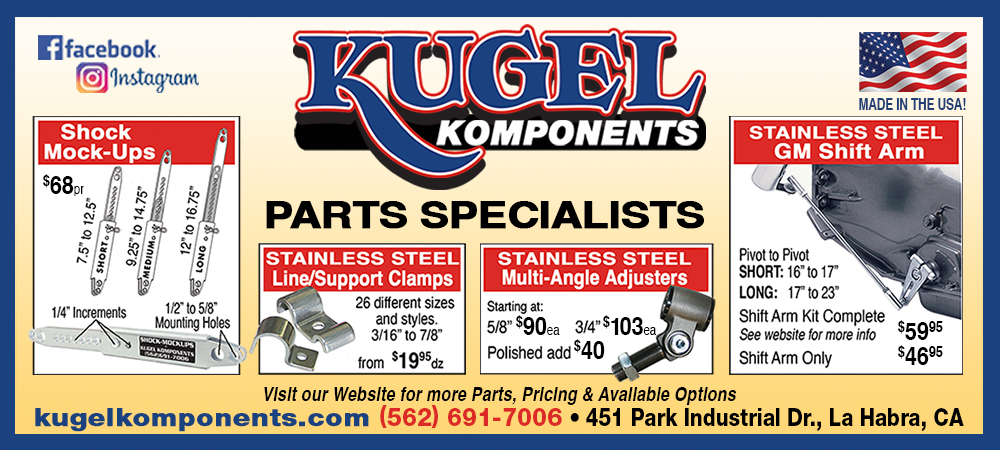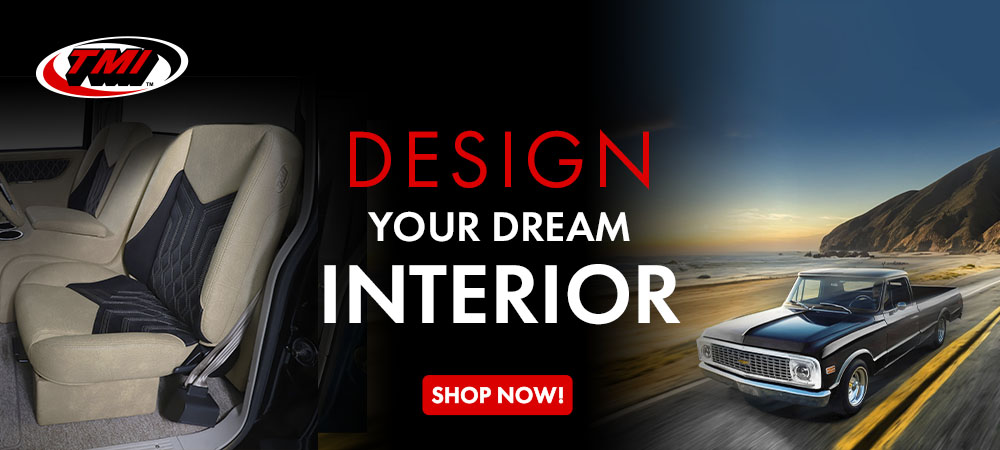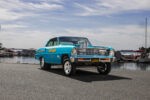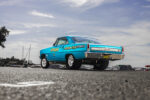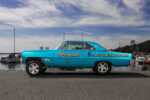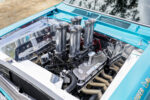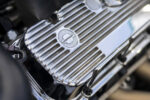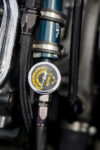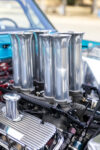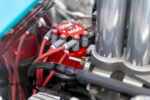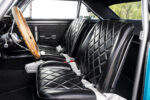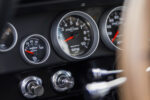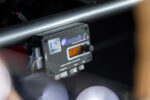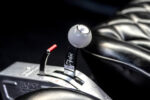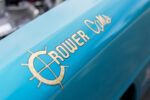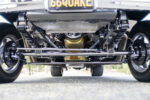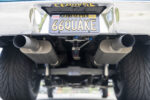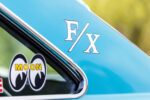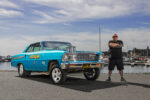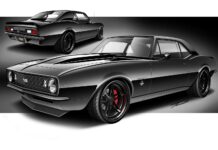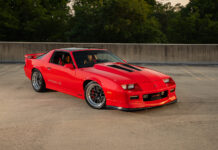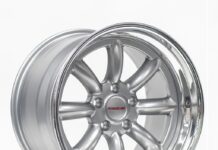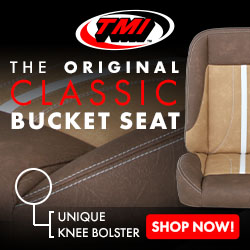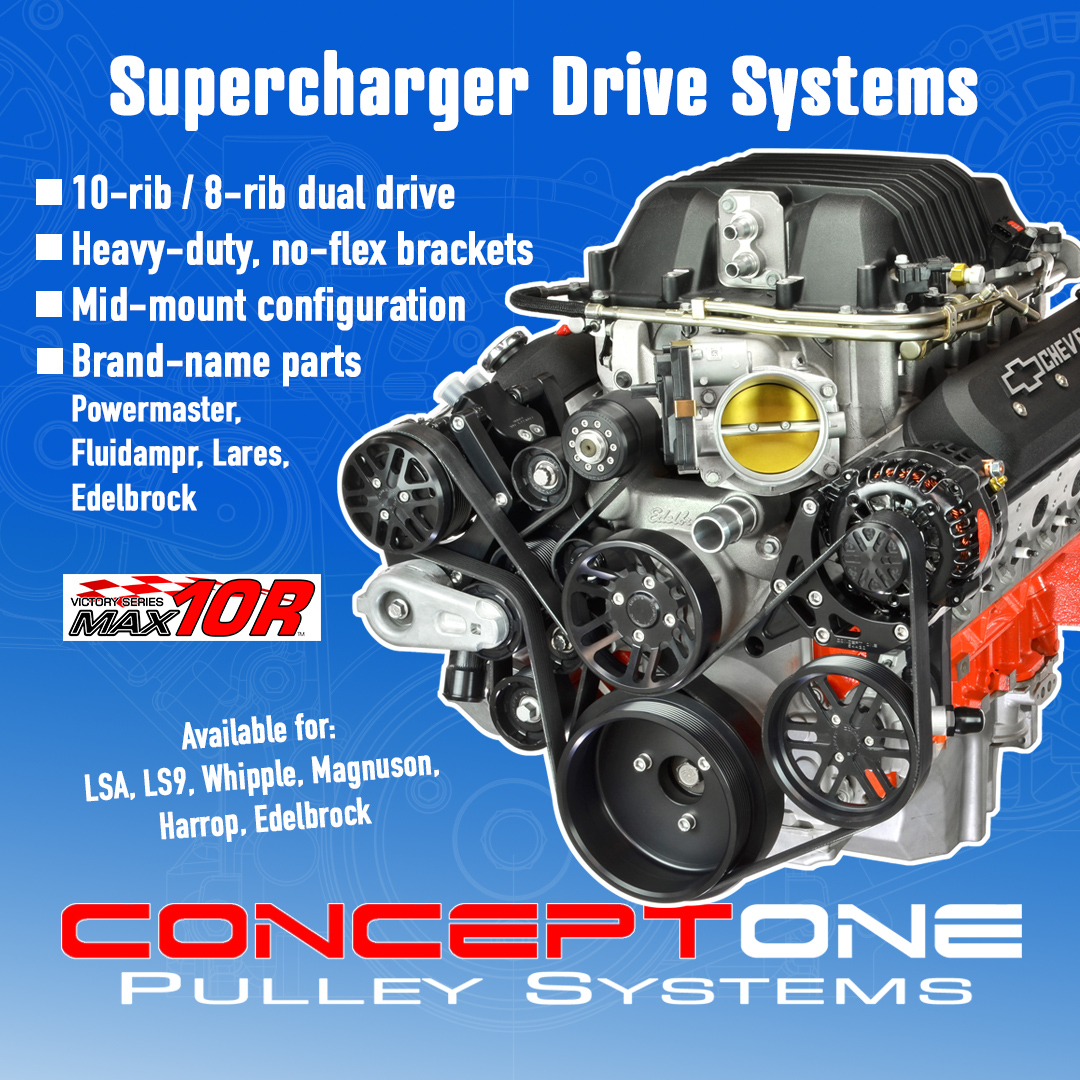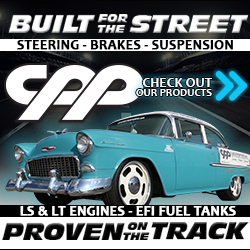By Dave Wallace – Images by Patrick Lauder
Unlike most of us, Shane Jackson has none of the usual regrets about letting his first Chevrolet get away. It was a true granny mobile; a hand-me-down from his big brother at age 16. Their bracket-racing parents, Jamie and Janice Jackson, became second owners at 48,000 miles after the first, a female neighbor, died. “A six-cylinder Chevy II was just an old car in the 1980s,” Shane recalls, now 53. The GM factory in nearby Fremont had pumped countless copies into San Francisco’s suburbs for two decades. The Jackson family’s underpowered training wheels stayed reliably stock, other than the bling of aluminum Weld rims made fashionable by Pro Stock racers of the era. Shane has the old photos in scrapbooks.
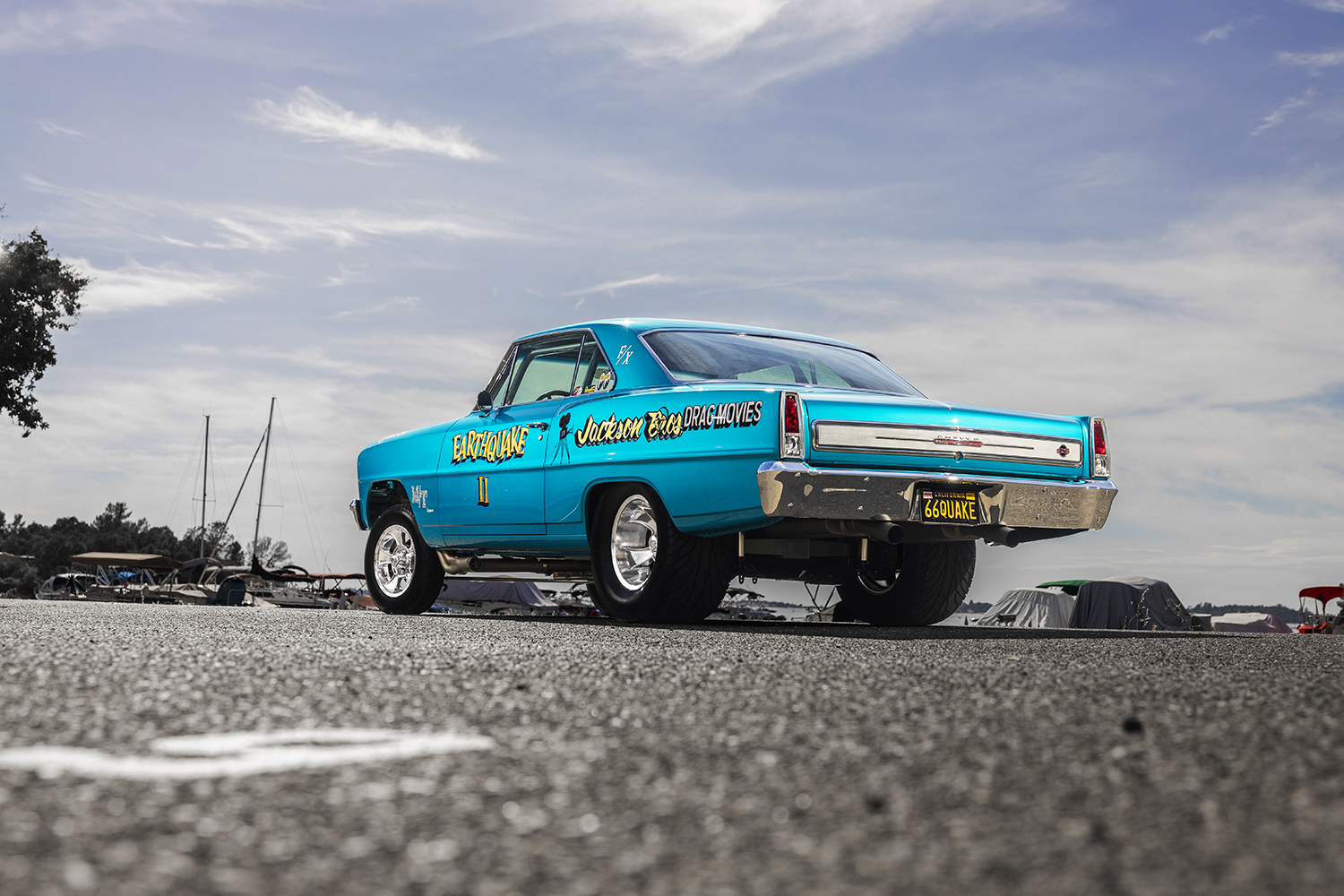
He has the old Nova in his garage.
During a quarter-century of commuting to school and work, Shane had plenty of time to fantasize back-halving and front-halving the slug into either a Pro Street or Pro Touring terror. However, he couldn’t shake old film that he’d seen of the mid-1960s Factory Experimentals that bridged the brief gap between steel bodies and fiberglass replicas. Shane still hadn’t determined the build’s direction when he dropped off the original 1966 SS coupe in the tiny Sierra Nevada town of Rough and Ready, California, with second-generation chassis builder Bill Fitting. After two weeks, Fitting called Shane to say, “I’ve been looking at this thing. Let’s put an axle under it.”
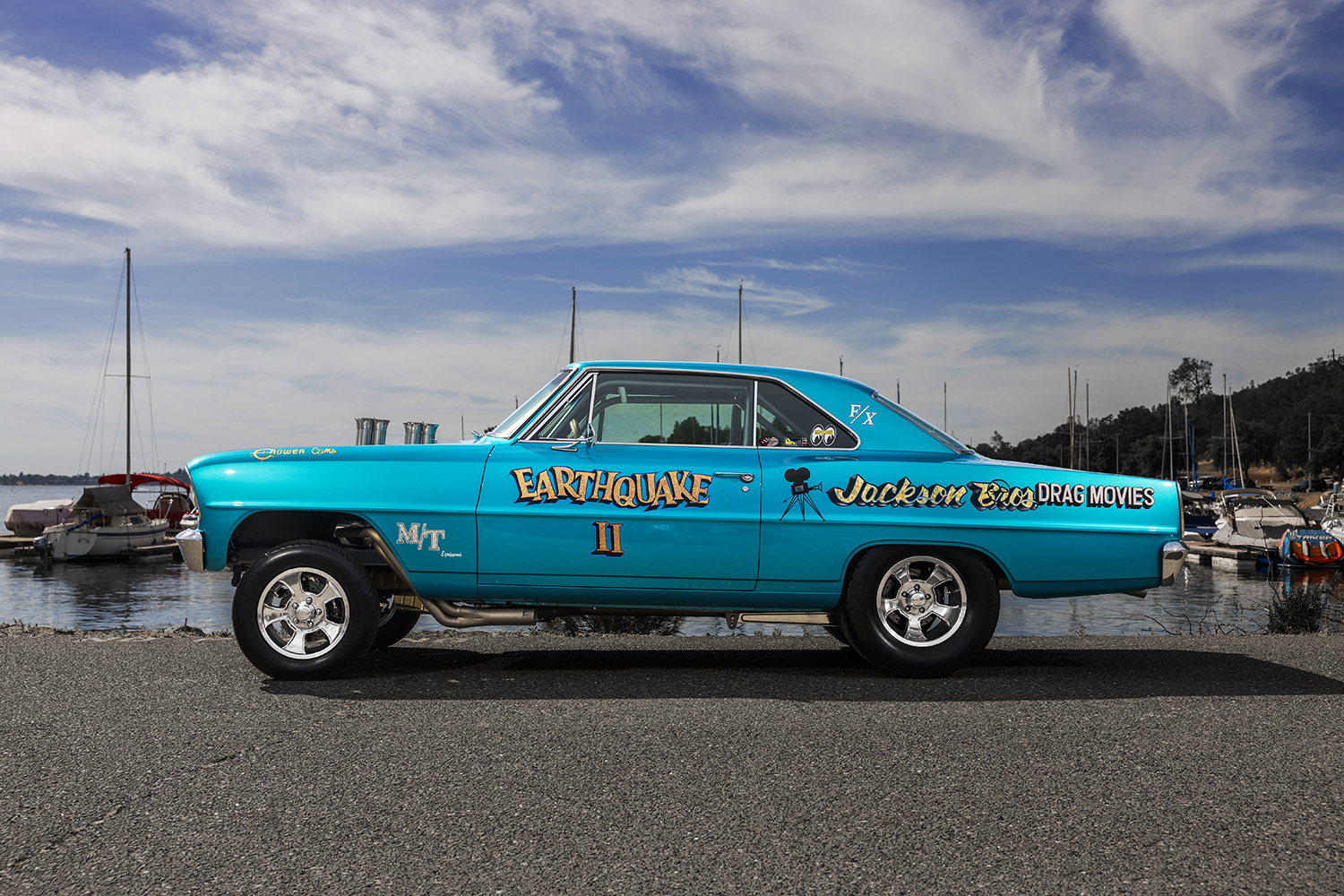
“That changed everything,” Shane explains. “This would be a full-frame race car that was legal and practical for street driving.” The A/FX theme was further encouraged by the original Jackson brothers, Shane’s dad Jamie and uncle Sonny. Both roofers by trade, they’d been shooting 8mm movie film since 1964—the same season that the gas-burning Dodge Chargers and nitro-burning Sachs & Sons Comet respectively changed the face of drag racing. Those young brothers were out there on the starting line when “real” Funny Cars peaked around December 1965—the last month before Mercury unleashed the one-piece fiberglass “floppers” that would render heavy door cars obsolete. Besides, paperwork in the glovebox indicated that Shane’s lightweight economy car was sold new to the deceased neighbor lady on December 16, 1965, in Oakland. Had such a vehicle been delivered instead to a talented sportsman racer, how might some Fremont Raceway regular—like, for example, Chevy-guy James Russell Liberman—have modified the innocent compact for match-race madness?
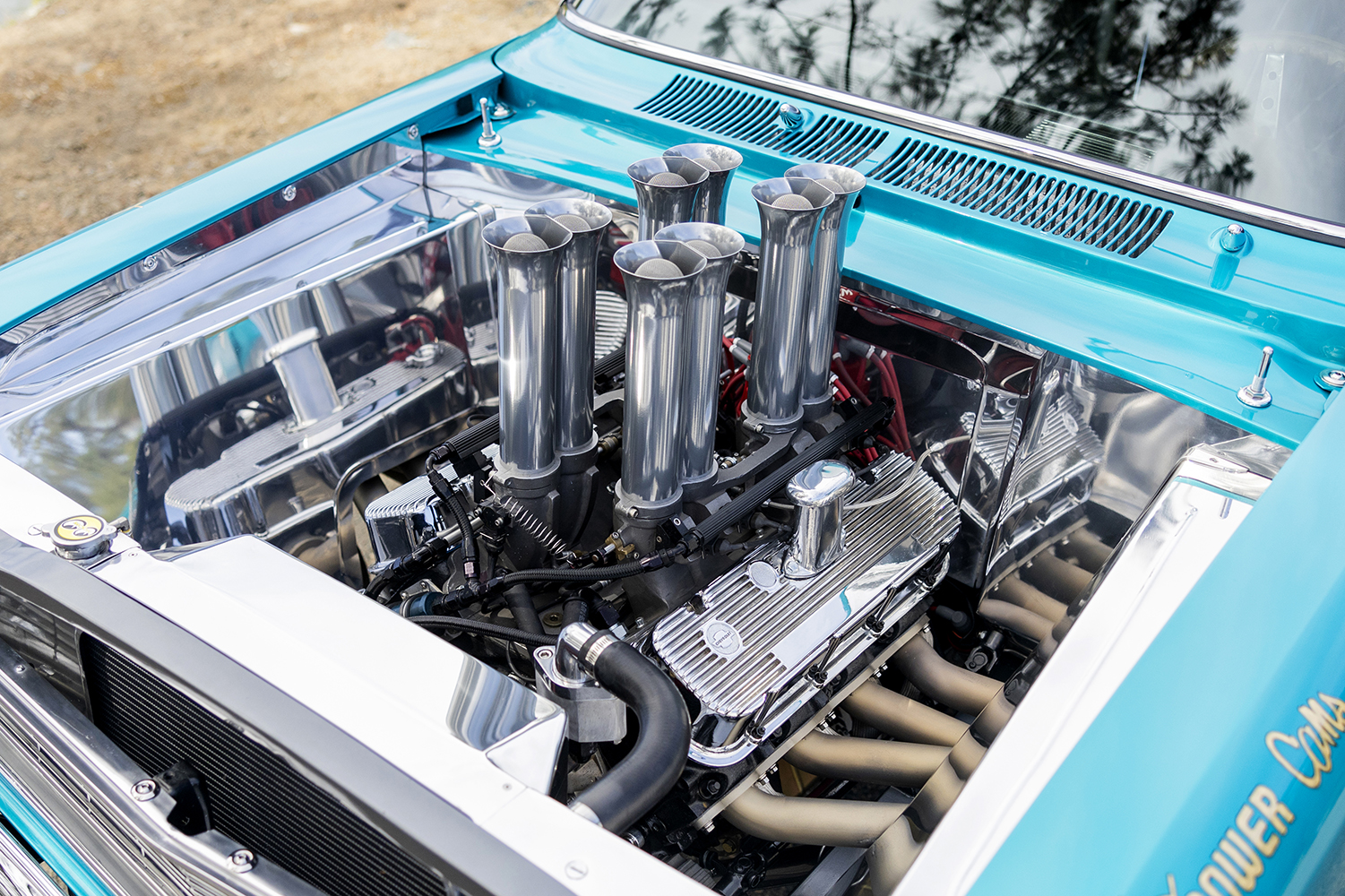
In fact, Jungle Jim’s 1966 car was one of a trio that helped make up Shane’s mind (along with Richard Schroeder’s “Bad Bossa Nova” and Dickie Harrell’s “Retribution,” both sprouting injector stacks through their hoods). Though he wasn’t born until 1972, there was no shortage of reference material in a childhood home shared with many reels of color movie film shot most weekends at San Francisco Bay area ’strips during drag racing’s Golden Age. “I also looked at every Chevy II in all of Steve Reyes’ history books and in my family’s old magazines through a magnifying glass, comparing stances. I didn’t want today’s exaggerated gasser look, with the front end all kicked up. Mine is only 2 1/2 inches higher in front than back. Everything is subtle; nothing is over the top. I didn’t want huge wheeltubs or too big of a tire.”
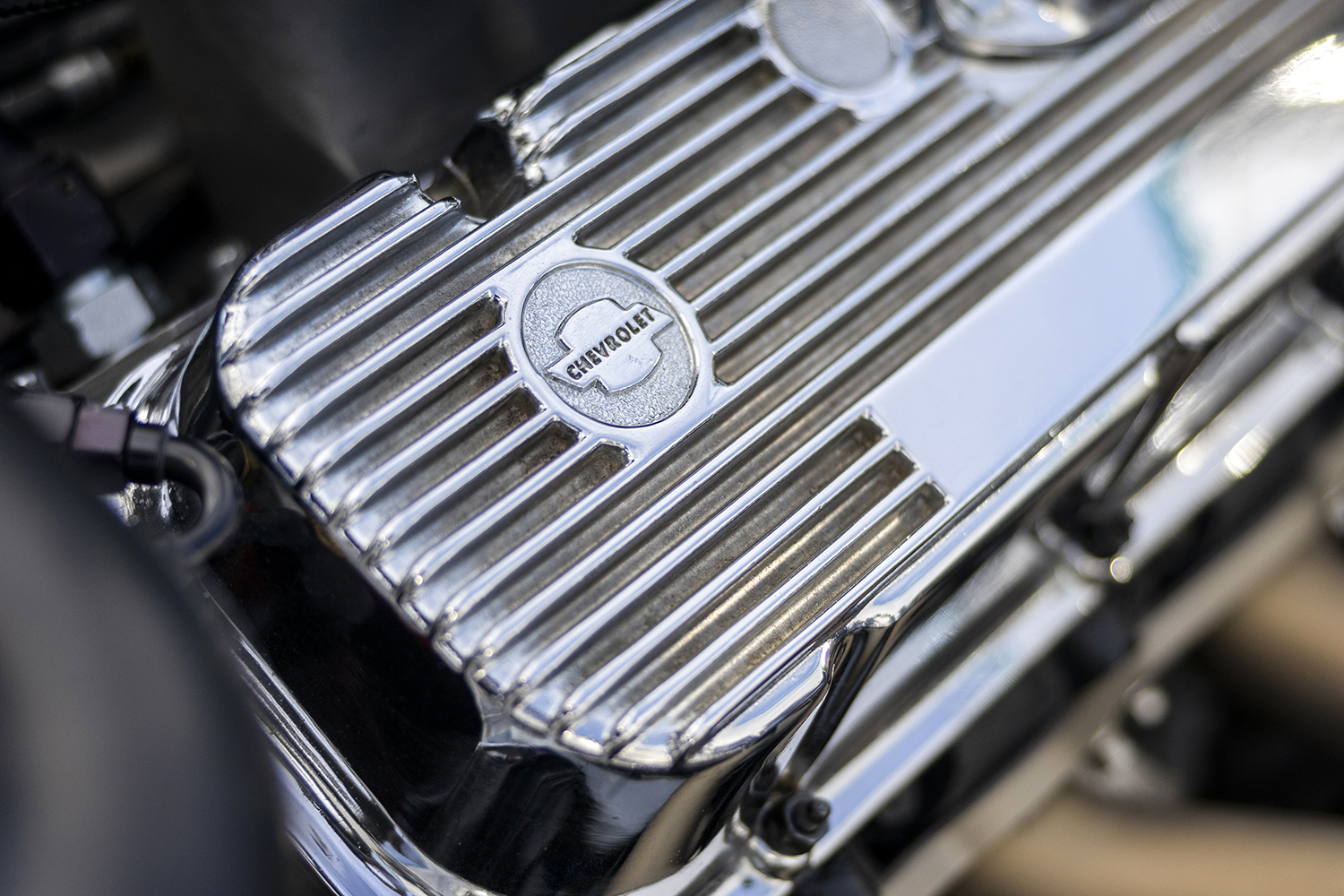
Indeed, the stock-appearing body belies all that it took Fitting Fabrication to achieve such a period-perfect stance, starting with 2x4x0.120-inch-wall, full framework that cleverly retains the factory wheelbase while sliding forward the front and rear axles by 3 inches each. Fitting designed a chromoly tube axle to accept the early Ford spindles and steering arm repopped by Speedway Motors. Oregon Spring Company built the leaf stack to Fitting’s specs.
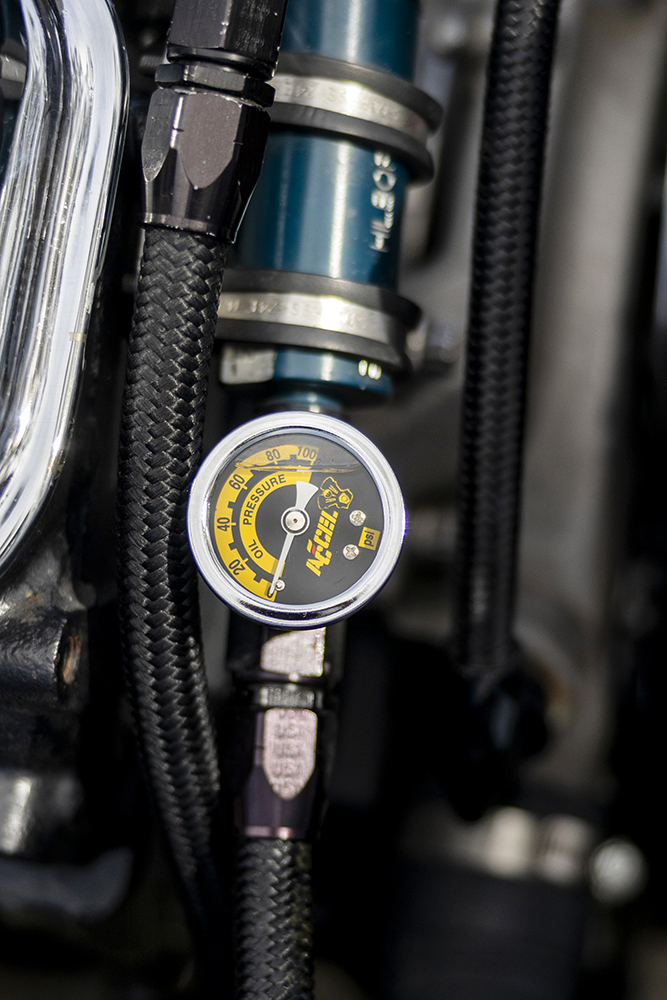
Recentering the 15×12 Rocket Injector rear wheels and M/T 29×15.00R15LT tires required both extending and widening the wheel openings with small panels that Fitting shaped and welded in for multitalented Jeremy Fisher to smooth and paint. Fitting also tinned the interior, bent up a six-point chromoly ’cage, and formed 2-inch header tubes dumping into 3-inch exhaust pipes muffled by 40-series Flowmasters. Shane credits surprisingly smooth sailing to the ladder bar system developed by Fitting’s father, chassis-builder Al Fitting, to complement 1970 Chevelle coils.
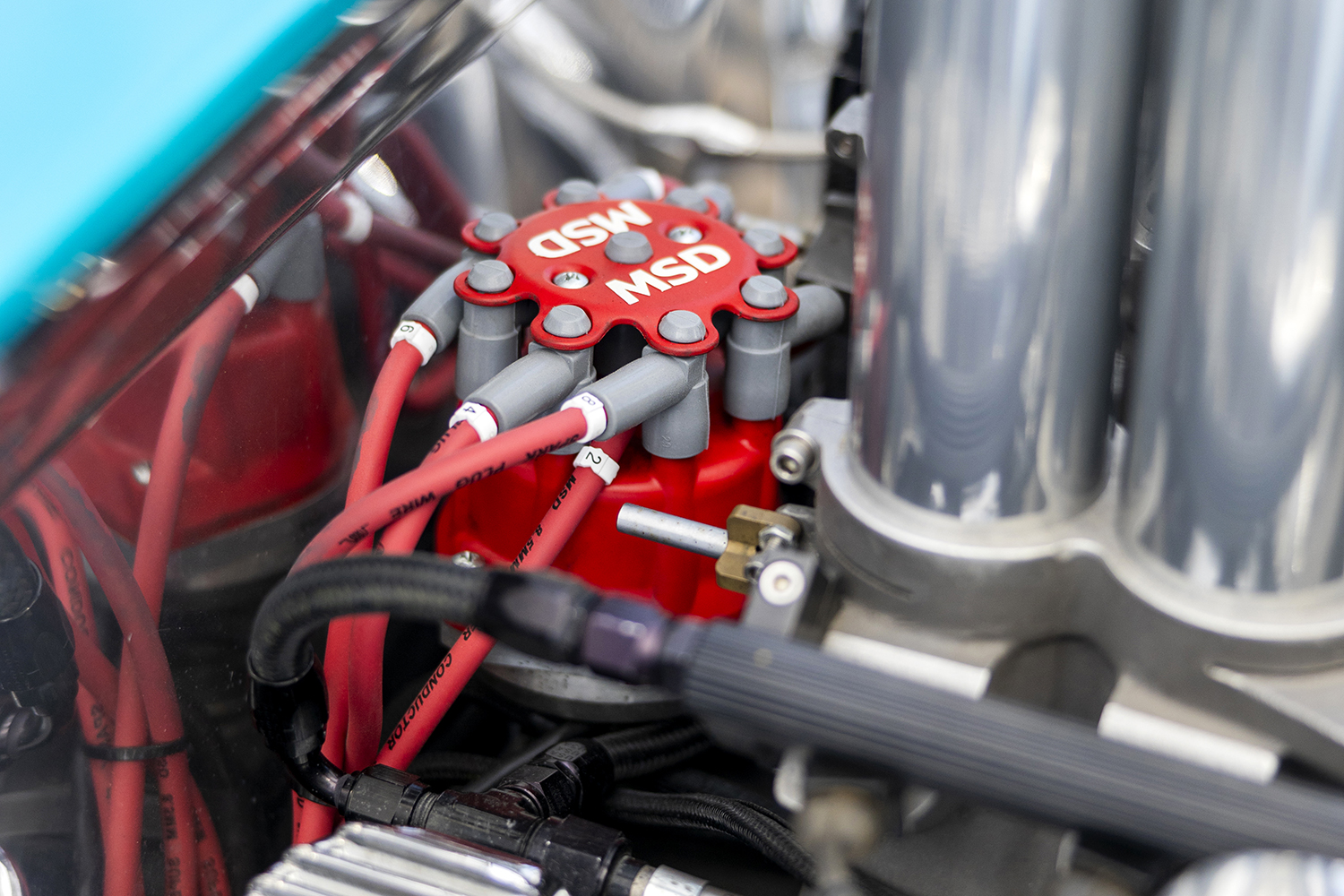 Engine choice was never in question. “I’ve wanted a big, bad Chevy motor ever since the first guy pulled up next to the Nova and asked, ‘Whaddya have under the hood?’ I never wanted to tell them I had a stock 230 six. That’s what planted the seed that someday I’m going to build this car into something really badass.” Installing an iron big-block did the trick, flat doubling displacement to 468 ci. Adding GM’s 4L80E transmission, 29-inch rear tires, and 4.11:1 gears enables 65-mph freeway cruising at a livable 3,000 rpm.
Engine choice was never in question. “I’ve wanted a big, bad Chevy motor ever since the first guy pulled up next to the Nova and asked, ‘Whaddya have under the hood?’ I never wanted to tell them I had a stock 230 six. That’s what planted the seed that someday I’m going to build this car into something really badass.” Installing an iron big-block did the trick, flat doubling displacement to 468 ci. Adding GM’s 4L80E transmission, 29-inch rear tires, and 4.11:1 gears enables 65-mph freeway cruising at a livable 3,000 rpm.
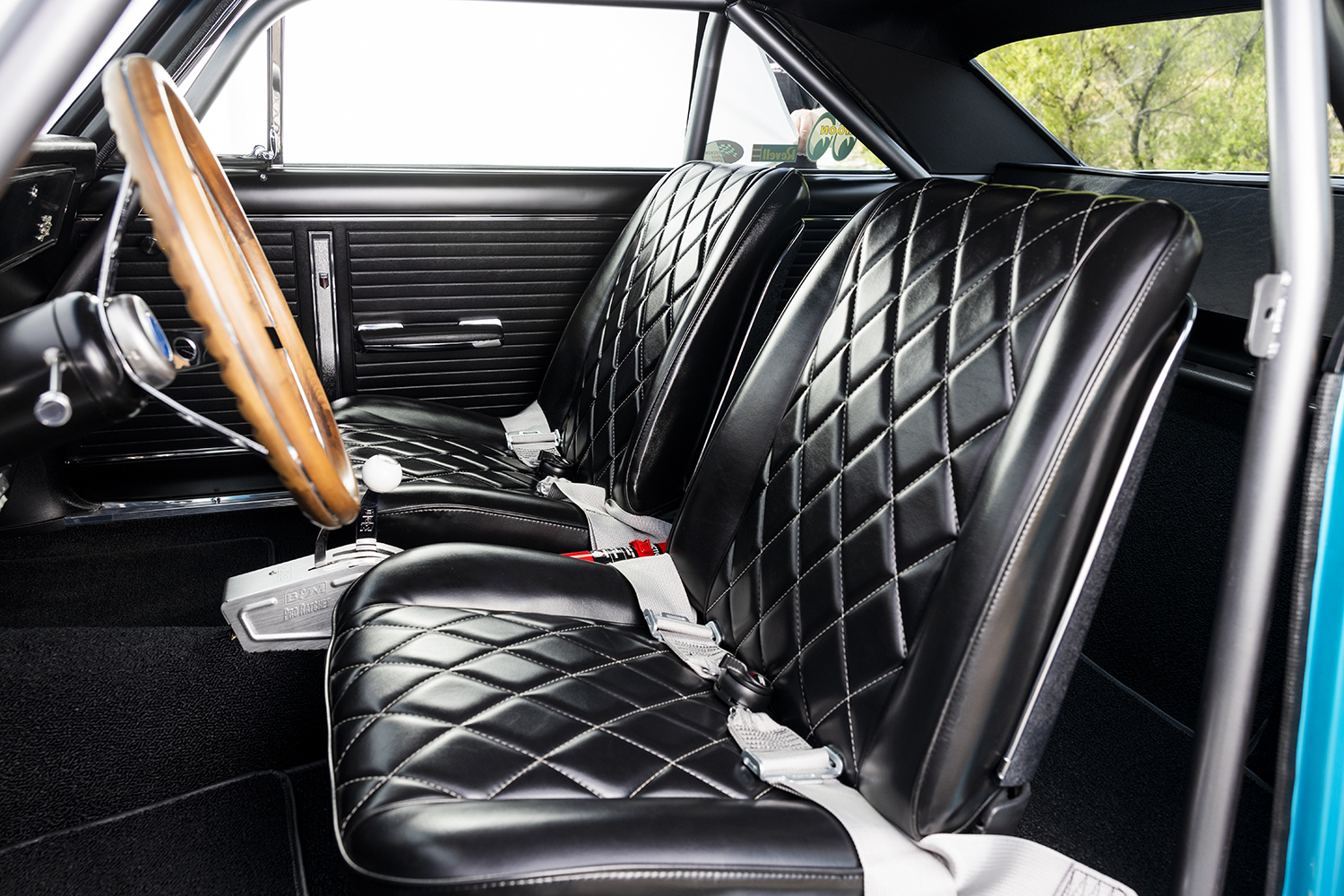
Last but not least was the challenge of getting Shane’s desired color and lettering just as pretty as pictured. “It took me two years to find a painter willing to shoot candy, which is tedious work. I was lucky to get Jeremy Fisher at EDC (Redding, CA) interested. He experimented with materials from different manufacturers. He wound up mixing metalflake with different sizes of dry pearls to create a color that he named “Tealicious.” Fisher also did the bodywork and wiring, then put the pieces back together in record time. Rory Pentecost (Dublin, CA) hand painted the graphics and lettering. I bought real gold leaf in three variegated colors, plus some silver leaf. The quarter-panel graphics and this car’s name honor my family’s video business and the 1957 Chevy that my mom and dad both raced, ‘Earthquake I.’ I picked cool sponsor logos that best fit the space available. I had no sponsorships; I paid for the Crower cam and everything else as I went, using bonus money from my Verizon job. That’s why the project took 13 years!
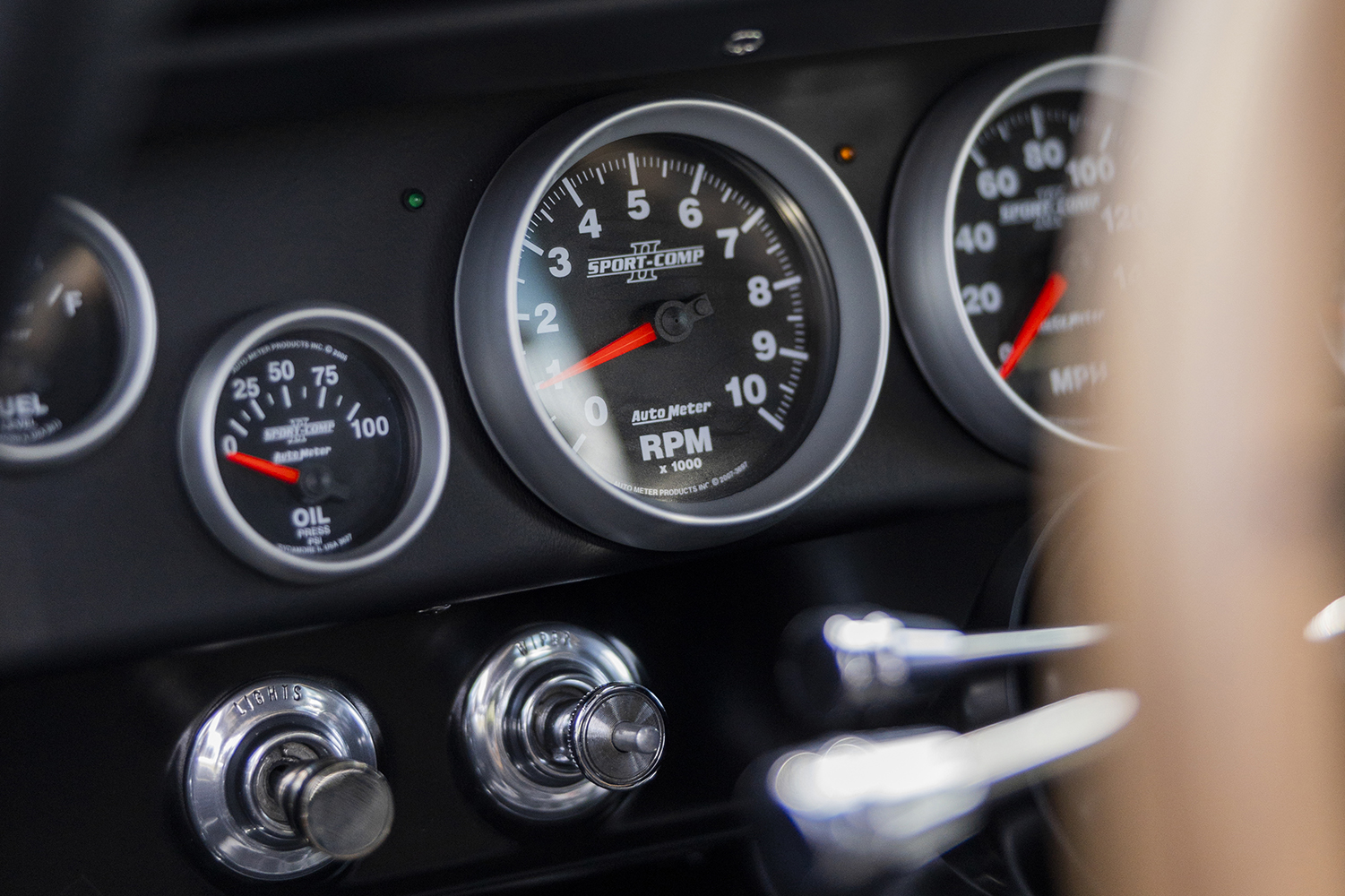
“I have no regrets,” Shane adds. “I’ve got my strong, safe, fast, reliable dream car that goes anywhere, is not uncomfortable, never runs hotter than 200 degrees in the summer. Anyone who wonders how someone could ‘cut up a real SS’ doesn’t understand that I came up through the drag racing world around people with highly modified cars. I literally grew up at Fremont Raceway in the 1970s, a little kid pushing Hot Wheels in the pits, pestering famous racers for autographs and handouts. I’m not an original-type guy. Hey, I’m building a hot rod here!”
Check out this story in our digital edition here.
TECH CHECK
Owner: Shane Jackson, Orangevale, California
Vehicle: 1966 Chevy II SS
Engine
Type: 1973 Chevy big-block
Displacement: 468 ci
Assembly: Bill Fitting (Rough and Ready, CA)
Reassembly: Owner
Camshaft: Crower 454 Pro Street
Cylinder Heads: Cast-iron 454
Induction: Hilborn eight-port stack injection, Holley HP ECU
Exhaust: Fenderwell custom headers by Bill Fitting, 3-inch exhaust, Flowmaster 40 Series mufflers
Valve Covers: Mickey Thompson
Ancillaries: MSD Pro Billet ignition, MSD wires, Summit Racing water pump, Griffin aluminum radiator
Drivetrain
Transmission: Chevrolet 4L80E by Gill “Transmission Whisperer” (Houston, TX)
Torque Converter: Circle D Specialties
Shifter: B&M
Driveshaft: Driveline Services (Sacramento, CA)
Rear Axle: Chris Alston’s Fab9 housing, custom-built Yukon third member, 4.11 gears, strange 31-spline axles
Chassis
Front Suspension: Custom 2×4 0.250 wall chromoly tube axle by Fitting Company, Speedway Motors reproduction spindles, Speedway Motors steering arms, Speedway Motors custom leaf springs from Oregon Speed Company, QA1 shocks
Rear Suspension: Custom Al’s Torque Arm billet bars with Chevelle coil springs, Panhard bar, QA1 adjustable shocks
Brakes: Wilwood 12-inch rotors, four-piston calipers front and rear, Summit Racing Corvette master cylinder
Wheels & Tires
Wheels: Rocket Injector Series 15×8 front, 15×12 rear
Tires: 26×8 R15LT front, 29x15R15LT rear
Interior
Upholstery: Black vinyl with diamond stitch pattern, trim and door panels from Classic Industries
Carpet: Black
Installation: Jim’s Upholstery (Folsom, CA)
Seats: Original 1966 Nova bucket with black diamond stitch vinyl
Harness: Crow Industries five-point
Rollcage: Six point, 1 5/8 inch chromoly tubing by Bill Fitting
Steering: Ididit steering column, 15-inch 1968 Chevelle steering wheel
Pedals: Custom by Bill Fitting
Dash: Factory
Instrumentation: Auto Meter
Wiring: Painless Performance Products by Jeremy Fisher (Redding, CA)
Entertainment System: None
Exterior
Bodywork and Paint: Jeremy Fisher (Redding, CA)
Paint: Custom mix Orion Automotive and House of Kolor Tealicious
Hood: Harwood fiberglass
Grille: Original
Front Bumper: Original
Rear Bumper: Original
Door Handles: Classic Industries
Headlights: Classic Industries
Taillights: Classic Industries
Side Mirrors: Classic Industries
Polishing: Classic Chrome (Sacramento, CA)












